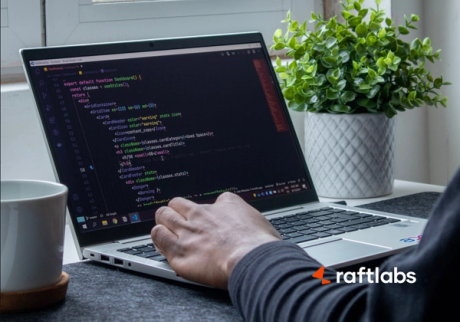
7 Step HIPAA Compliance Checklist For Software Development: A Quick Guide for 2024
- Riya Thambiraj
![Riya Thambiraj]()
- Checklist and guides
- Last updated on
Are you considering building a healthcare app that will handle sensitive patient data?
If so, ensuring HIPAA compliance from the start is crucial.
But what exactly does it mean, and why is it so vital when developing healthcare apps?
HIPAA, or the Health Insurance Portability and Accountability Act, sets the standards for protecting sensitive patient information. If you're developing healthcare apps, making sure your software follows a HIPAA compliance checklist for software development isn’t just a technicality—it’s crucial for safeguarding patient data.
For example, think about a telehealth app that allows doctors to consult patients online. If that app doesn’t follow HIPAA rules, patient records, diagnoses, or even video sessions could be exposed to unauthorized access, putting both the patients' privacy and the organization’s reputation at risk.
With digital health solutions like telehealth and remote monitoring on the rise, keeping that information secure is more important than ever. Beyond just avoiding fines or legal consequences, HIPAA compliance builds trust with your users by ensuring their sensitive information stays safe.
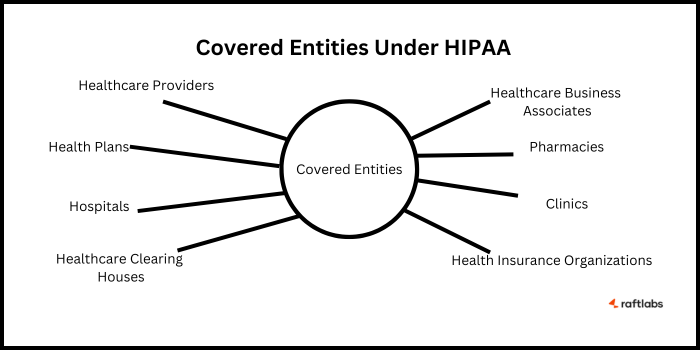
In this guide, we’ll walk you through a HIPAA compliance checklist for software development to help you build healthcare apps that are secure and reliable. By following these steps, you can confidently protect both patient data and your business.
A. What is HIPAA Compliance?
HIPAA compliance for software development involves implementing safeguards to protect patient data. When building HIPAA compliant software, developers must follow specific rules:
Privacy Rule: This ensures Protected Health Information (PHI) is used only for allowed purposes, like treatment or payment. Developers need to implement access controls and ensure data is only shared with authorized individuals.
Security Rule: It requires the protection of electronic PHI (ePHI) through encryption, secure authentication, and access controls. These measures help prevent unauthorized access to sensitive data.
Breach Notification Rule: Developers must include mechanisms to detect and report breaches promptly, as affected individuals and authorities must be notified in case of a data breach.
Enforcement Rule: Understanding this rule is essential as it outlines penalties for non-compliance. Developers should ensure their software meets all necessary standards to avoid penalties.
Following these guidelines when building HIPAA compliant software ensures both regulatory compliance and data security.
B. What is the Importance of HIPAA Compliance in Healthcare?
HIPAA compliance protects patients' sensitive data from breaches and unauthorized access.
It builds trust by demonstrating a commitment to security while helping healthcare organizations avoid costly fines, legal issues, and reputational damage.
With the growing use of telehealth and remote monitoring, HIPAA compliance is more critical than ever.
When building HIPAA compliant software, developers must prioritize data protection features to meet regulatory standards and safeguard patient information.
C. Why Is HIPAA Compliance for Software Development Important?
While HIPAA may seem primarily relevant to healthcare providers, it has serious implications for developers working on software that handles Protected Health Information (PHI).
Here’s why HIPAA compliance for software development is crucial:
i. Data Breaches and Penalties
A breach exposing PHI can result in significant financial penalties, lawsuits, and severe damage to a company's reputation. Developers responsible for software that mishandles PHI can also be held accountable.
ii. Building Customer Trust
Trust is vital in healthcare. Patients expect their personal information to remain confidential. By ensuring that the software you develop follows HIPAA compliance software requirements, you help build trust with healthcare providers and their patients, ensuring that sensitive data is appropriately handled.
iii. Regulatory Requirements
Many healthcare organizations are legally obligated to comply with HIPAA regulations. If your software is intended for these organizations, it must meet HIPAA standards or risk being rejected or banned from use.
iv. The Financial Impact of Data Breaches
According to the Department of Health and Human Services (HHS), the average cost of a data breach in the Healthcare and Public Health (HPH) sector is $10.93 million. This includes investigation costs, legal fees, lost business, and damage to a company's reputation.
v. Cybersecurity Threats in Healthcare
Due to the sensitive data it stores, the healthcare sector is a prime target for cyberattacks. From March 2022 to February 2024, the healthcare industry faced the highest average cost of data breaches, nearly $9.77 million according to Statista. This highlights the critical importance of HIPAA compliance for developers managing healthcare data.
vi. Developers’ Role in Securing PHI
Developers play a key role in protecting PHI. If the software is not HIPAA-compliant, it may have vulnerabilities that cybercriminals can exploit, leading to data breaches, legal consequences, and significant fines.
vii. Business Benefits of HIPAA Compliance
Following HIPAA rules does more than keep you out of legal trouble. Organizations with strong cybersecurity practices are more likely to attract and retain customers, improve their reputation, and boost profitability.
Thus, having a HIPAA compliance checklist for application development and ensuring your software meets all HIPAA requirements for software is essential to safeguard patient information and maintain compliance.
D. HIPAA Compliance Checklist for Software Development
Ensuring HIPAA compliance isn't just about ticking boxes; it's about creating a secure environment where patient data is always protected.
Whether you're managing a healthcare app, running a clinic, or overseeing hospital operations, maintaining HIPAA standards is crucial for safeguarding sensitive health information.
We've compiled this comprehensive checklist to help you stay on track.
1. Transport Encryption:
Ensure that your website uses HTTPS to encrypt data during transmission. This is crucial for protecting information as it travels between your site and users.
Check if you have SSL certificates in place. These certificates verify your website’s identity and secure the data being exchanged.
2. Backup and Storage Encryption:
Make sure your data backups are encrypted. This step prevents unauthorized access to sensitive information, even if backups are compromised.
Are you using encrypted cloud storage? Consider options like Amazon RDS and Google Cloud SQL to keep your data secure.
3. Identity and Access Management:
Strong passwords are essential. Require complex passwords for all users to reduce the risk of unauthorized access.
Implement multi-factor authentication (MFA) for added security. MFA, also known as 2FA, requires a second form of verification, making it harder for intruders to gain access.
4. Integrity:
Digital signatures and data verification are key. Ensure that all data is signed and verified to prevent tampering or unauthorized changes.
Track any modifications to ePHI (electronic protected health information). Keeping logs of changes helps you detect unauthorized access and maintain data integrity.
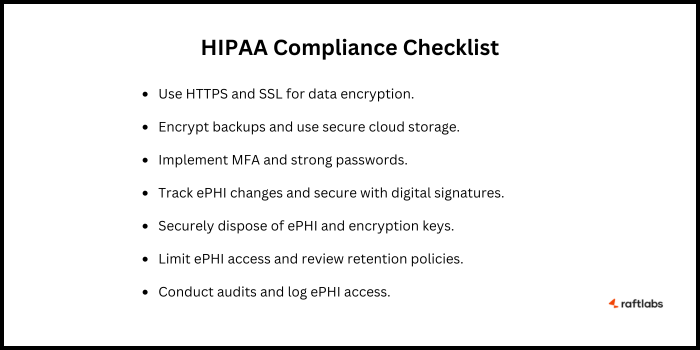
5. Disposal:
Properly dispose of ePHI and encryption keys when they are no longer needed. This prevents sensitive information from being exposed.
Shred old files and erase decryption keys. This practice ensures that no residual data can be recovered by unauthorized parties.
6. Data Minimization
Ensure that only the minimum necessary amount of ePHI is accessed and shared.
Regularly review and adjust data retention policies to ensure that ePHI is not kept longer than necessary.
7. Audit Controls:
Implement logging to track access to ePHI. This helps in identifying any unauthorized activity and maintaining a secure environment.
Conduct regular audits of your systems. Routine checks help uncover vulnerabilities and ensure ongoing compliance with HIPAA requirements.
E. Do All Healthcare Apps Fall Under HIPAA Regulations?
HIPAA regulations don’t always apply to every healthcare app. If the app doesn’t handle or transmit protected health information (PHI), it may not fall under HIPAA’s scope.
For example, fitness apps that track steps or calories without involving medical data are generally not covered by HIPAA.
However, if an app collects, stores, or shares health-related data with healthcare providers, insurance companies, or other covered entities, HIPAA rules come into play. App developers must understand when HIPAA applies and ensure compliance if their app deals with PHI.
Here are a few examples of apps that likely don't need to comply with HIPAA because they don't handle Personal Health Information (PHI):
Fitness Trackers: Apps that monitor general wellness activities like step counts, calorie intake, or workout routines without involving medical data.
Meditation Apps: Tools that guide users through relaxation or mindfulness exercises without collecting health records or linking to healthcare providers.
Diet and Nutrition Apps: Programs that help users track meals or recommend recipes, as long as they aren’t connected to medical advice or providers.
Sleep Tracking Apps: Apps that monitor sleep patterns or offer tips for better rest unless connected to a healthcare system or provider for treatment.
These apps generally focus on wellness rather than medical care and are unlikely to handle PHI.
At RaftLabs, we specialize in building innovative healthcare apps that not only meet but exceed HIPAA compliance standards. With our deep expertise in healthcare technology, we’ve helped our clients create secure, efficient, and patient-focused solutions that address the unique challenges of remote care and chronic disease management.
Here are some of our recent healthcare projects:
1. AI-Enhanced Remote Patient Monitoring App for Chronic Care
We built an AI-powered remote patient monitoring app that integrates with wearable devices like CGM and BPM. The AI provides real-time insights, reducing clinical decision-making time by 20% and helping providers manage chronic care patients more efficiently.
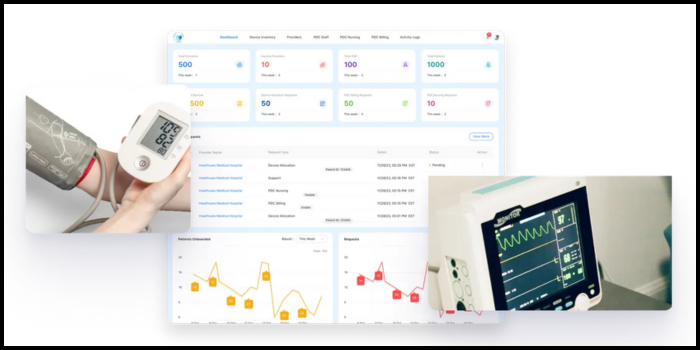
2. Telehealth App for Virtual Remote Care
We developed a HIPAA-compliant telehealth app that cut ER visits by 60%. Used by over 150 hospitals, it enables physicians to offer remote care using FDA-approved peripherals, increasing patient access and reducing strain on emergency services.

3. Remote Patient Monitoring App For Senior Citizens
Our RPM app, adopted by 15+ clinics in two months, improves remote care by speeding up response times by 50%, securely transmitting health data from wearable devices like CGM and BPM, enabling timely interventions.
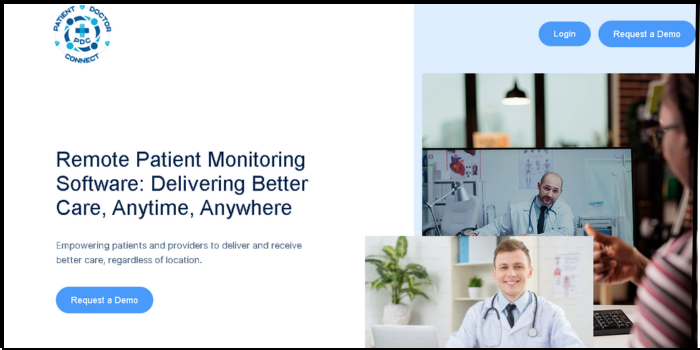
F. Wrap-up
In conclusion, building a healthcare app comes with a unique set of challenges, especially when it comes to ensuring patient data privacy and security.
HIPAA compliance plays a critical role in meeting these challenges, as it sets the standard for protecting sensitive health information.
Without adhering to these regulations, healthcare apps risk exposing personal data, facing legal penalties, and losing user trust.
At RaftLabs, we’re committed to developing healthcare solutions that drive meaningful change. If you’re considering building or improving a healthcare app that is HIPAA- compliant, we’d be happy to bring our expertise to your project.
FAQs
- What is the first step to get started with HIPAA compliance for software development?
HIPAA compliance ensures that your software protects sensitive patient information from breaches, misuse, and unauthorized access. It also helps avoid legal risks, builds trust with users, and ensures that healthcare organizations can use your software without violating privacy laws.
Following a HIPAA compliance checklist for software development is crucial to meet these standards. If you want to develop a HIPAA-compliant app with expertise, contact RaftLabs to ensure your project meets all necessary requirements for data security and compliance.
- Why is HIPAA compliance important in software development?
HIPAA compliance ensures that your software protects sensitive patient information from breaches, misuse, and unauthorized access. It helps avoid legal risks, builds trust with users, and ensures that your software can be used by healthcare organizations without violating privacy laws. If you want to develop a HIPAA-compliant app with expertise, contact RaftLabs to ensure your project meets all necessary requirements for data security and compliance.
- How do you build HIPAA-compliant software?
To build HIPAA-compliant software, you must implement key safeguards like encryption, secure user authentication, access control, and data integrity checks. Developers should also establish audit trails to monitor who accesses PHI and how it’s handled.
- What are the key requirements for implementing HIPAA compliance in software?
You need to follow these steps: conduct a risk analysis, ensure data encryption, create secure access controls, implement an audit trail, enable breach notifications, and ensure that ePHI is stored and transmitted securely. Regular updates and audits also help maintain compliance.
- Why is HIPAA compliance crucial for healthcare organizations?
HIPAA compliance ensures the protection of patient data, which is critical for maintaining trust and preventing legal issues. With the rise of telehealth and remote monitoring, HIPAA compliance helps organizations avoid costly data breaches and protect patient privacy.
- How much does it cost to develop a HIPAA-compliant healthcare app?
The cost of developing a HIPAA-compliant healthcare app varies depending on the complexity of the app, required features, integration with existing systems, and the level of data security needed. For a more detailed breakdown of our pricing options and services, we recommend visiting our Pricing Page. There, you'll find more information on packages that suit different project needs and budgets.
If you have specific requirements or need a custom quote, feel free to reach out to us directly!
- What does HIPAA compliance entail for healthcare software?
HIPAA compliance involves meeting strict standards set by the Health Insurance Portability and Accountability Act (HIPAA) to protect PHI. This includes following rules related to privacy, security, breach notifications, and enforcement to ensure patient data is handled properly.
- How to implement hipaa compliance?
To implement HIPAA compliance, follow these steps:
- Conduct a Risk Assessment: Identify potential vulnerabilities and risks to Protected Health Information (PHI).
- Develop Policies and Procedures: Create clear policies for handling PHI, including data access, storage, and sharing.
- Ensure Data Encryption: Use encryption for both data at rest and data in transit to protect sensitive information.
- Implement Access Controls: Set up role-based access controls to ensure only authorized personnel can access PHI.
- Train Staff: Provide comprehensive training for employees on HIPAA regulations and data security practices.
- Establish Audit Trails: Maintain logs of all access and changes to PHI to track any potential breaches.
- Prepare for Breach Notifications: Have a plan in place to notify affected individuals and the Department of Health and Human Services (HHS) in the event of a data breach.
- Regularly Review and Update Policies: Conduct regular audits and update your compliance measures as needed to stay aligned with HIPAA regulations.
By following these steps, you can help ensure that your software and practices meet HIPAA compliance standards.
- How can software developers get started with HIPAA compliance?
The first step is conducting a comprehensive risk assessment. This will help identify any security gaps that must be addressed to protect PHI. Once identified, developers can begin implementing HIPAA's required safeguards and protections.
Following a HIPAA compliance checklist for software development will ensure that all necessary measures are in place to secure sensitive information effectively.
- What are the software requirements to ensure HIPAA compliance?
HIPAA-compliant software must include encryption, secure user authentication, audit logs, data integrity controls, and access restrictions. It should also support breach notifications and comply with HIPAA’s privacy and security rules.
- How can you ensure your remote access software is HIPAA-compliant?
To ensure your HIPAA-compliant remote access software meets the necessary standards, implement encryption, strong authentication measures, secure data transmission, and access control. Additionally, this software should maintain audit logs and ensure that remote sessions are secure.
- What are some best practices for HIPAA compliance in software development?
Best practices include conducting regular risk assessments, ensuring end-to-end encryption, implementing secure access controls, establishing audit trails, and regularly updating the software to stay aligned with HIPAA compliance software requirements.
Additionally, using a HIPAA compliance checklist for software development can help ensure that all critical aspects of compliance are systematically addressed throughout the project.
- What are the main HIPAA compliance software requirements?
Key HIPAA compliance software requirements include data encryption, secure user authentication, audit logs, breach notifications, and access control. Additionally, healthcare software must ensure the privacy and security of ePHI during both storage and transmission, which is essential in HIPAA compliance software development. To ensure that all these requirements are met, following a HIPAA compliance checklist for software development can be highly beneficial.
Insights from our team
let's talk about your project
Generative AI, voice AI, automation, SaaS — whatever you're building, we'll help you launch and stay with you long after.
We're not just another AI company chasing buzzwords. We design, build, and scale AI-powered products while standing behind every line of code.
Clients choose us not only for our expertise but because we stay available, communicate clearly, and treat their success as our own.


